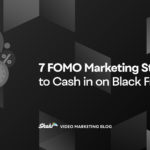With advanced tracking pixels and today’s current technology, it doesn’t seem like it would be so hard to figure out how effective your PPC ad campaigns are. Someone sees an ad, they click, they buy. Super straight forward, right?
In reality, conversion funnels are often more complex than that. Users often need to see an ad from the same brand multiple times before they’ll be comfortable enough to click, let alone convert. And those initial ads may not be attributed properly for eventual conversions– even if they should.
This has always been a particularly steep challenge for video advertisers in particular, who are often utilizing storytelling and emotional impact to build brand awareness and recognition. It’s a long term game, and those are harder to track.
YouTube’s brand lift solution has been a strong solution to help advertisers track the impact of their video ads outside of direct and immediate conversions, and they’ve recently made some updates to how it works. In this post, we’re going to take a look at the updated YouTube brand lift metric, the metrics associated with it, and what it all means for video advertisers.
What Is YouTube’s Brand Lift Solution?
YouTube’s Brand Lift Solution is a free tool that advertisers can use to measure the overall effectiveness of your in-stream and bumper ads.
Here’s how it works. You create an “advertised object,” which is essentially a grouping of multiple campaigns that share something in common, like a single brand, product, or service. You provide Google with information about the object being advertised, and they’ll generate a list of survey questions that will be shown to your target audience.
These surveys are shown to two groups of people: those who have seen your ads, and those who are in the target audience for your ads, but haven’t seen them yet. They’ll show the survey on YouTube before a video starts, and the difference in responses will give you an idea of how much users actually took away from your campaigns and the impact on overall awareness, ad recall, and consideration.
What Metrics Can YouTube’s Brand Lift Solution Give Us?
Depending on the number of survey responses you need (and the larger the sample size, the better), you’ll be able to get insight onto a number of brand lift metrics. These include:
- Positive response rate, or the percentage of people who responded positively when surveyed about your ad
- Absolute brand lift, which shows the difference in positive responses from people who’ve seen your ads and those who haven’t.
- Headroom lift, or the increase in positive feelings that your ads resulted in compared to the potential positive growth it could have gotten
- Control positive response rate, the people in the control group who responded positively to your ads
- Relative brand lift, the difference in positive responses from users who saw your ad versus those who didn’t
- Number of lifted users, a new metric just announced that allows you to see the number of people influenced by your ad
- Cost per lifted user, a new metric just announced that shows you how much it cost to create a lifted user
Why It’s a Game Changer
Some things are easy to track. Someone sees an ad, they click, they convert, great. Or they read a post, sign up for a lead magnet embedded in it, and then eventually become a customer. Those instances of beautiful, straightforward simplicity are a marketer’s dream, but they’re often not the reality.
Two weeks ago, I saw an incredibly effective video ad for a laundry detergent brand. It showcased “clean” clothes in a tub filled with now-dirty water swirling around, letting people know that regular detergent just wasn’t cutting it. I watched the whole video. At that point I remembered the brand, even though I saw other ad campaigns from them in the past I ignored.
I didn’t click, because I was in a hurry. But I remembered the ad. Last week, I clicked on a different ad. Today, I actually converted, though I Googled the product outright instead of clicking on an ad to do so.
Attribution models will hopefully catch that, and at least show that some Facebook Ad helped me get to the purchase point. Either way, that’s a “messy” conversion; it’s hard to track, and unfortunately, plenty of conversions resemble it.
That’s part of what makes YouTube’s brand lift solution so important. You can get a solid understanding of how your ads are impacting awareness and ad recall. We’re getting insight into some of the “messier” and harder-to-track metrics.
What Do These Metrics Mean for Video Advertising as an Industry?
Tools like YouTube’s brand lift metric are essential to be able to better gauge the overall impact of your ads. Even if “brand awareness” isn’t as easy to track, it is as important– especially if it leads to conversions down the line in a way that’s much more difficult to track.
Moving forward, whether attribution models shift or not, gaining more insight from other ad platforms about even estimated brand awareness will be huge assets to video advertisers. I’m hoping that the updated brand lift metrics– which now show more impact in real time, along with the new associated metrics– are a great step in that direction, not only for YouTube but all PPC platforms, too.
This likely means that as marketers scale their video ad campaigns (which they can do easily and affordably with tools like Shakr), they’ll be able to know where and how to scale and what to invest in, all while understanding the big-picture impact.
Conclusion
When you talk to ad agencies, they’re typically focusing exclusively on concrete metrics. Clicks. Conversions. Even “vanity metrics” like engagement (which isn’t entirely “vanity” due to the impact of social proof). These metrics are obviously important; strong, concrete evidence of how your ads are performing should be prioritized.
They still don’t tell the whole story and they never will, at least not accurately. Gaining more metrics– even if they’re more “black box” metrics or they come from behind-the-scenes algorithms– that allow us to even estimate impact on factors like brand awareness or recognition will be crucial. We’ll be able to create better and more relevant video content and have a stronger understanding on how and when to invest our ad spend.
What do you think? How do you feel about the brand lift metric? How do you track and assess results in terms of brand awareness or recognition? Do you hope to see more metrics like YouTube’s brand lift metric moving forward? Share your thoughts and knowledge in the comments below!



3 comments On YouTube’s Updated Brand Lift Metrics & What It Means for Video Advertising
Pingback: YouTube’s Updated Brand Lift Metrics & What It Means for Video Advertising – Eddy Web Creative ()
Pingback: YouTube’s Updated Brand Lift Metrics & What It Means for Video Advertising - TRENDING STORY ()
Pingback: YouTube’s Updated Brand Lift Metrics & What It Means for Video Advertising – Just Internet Marketing ()
Comments are closed.